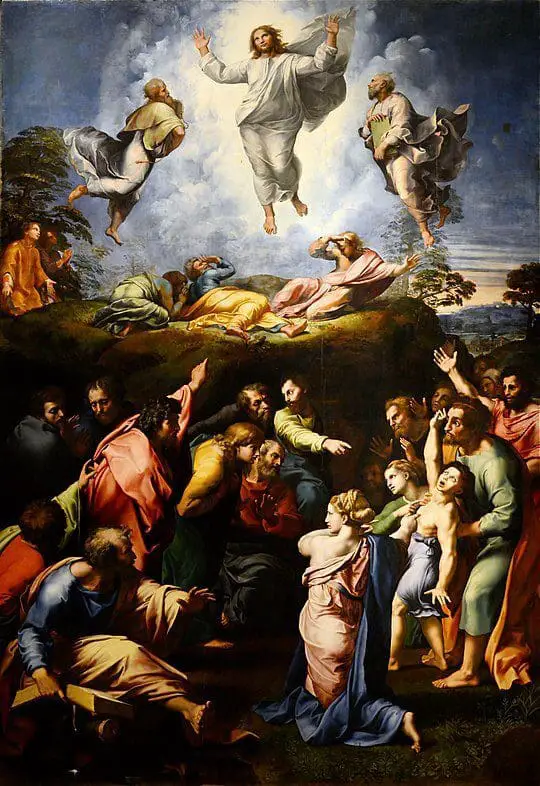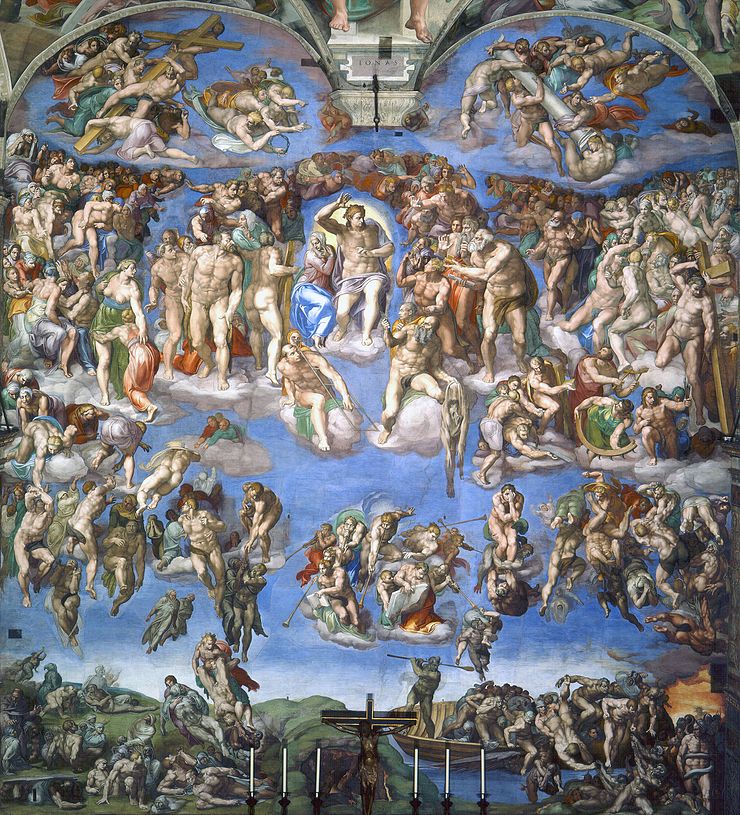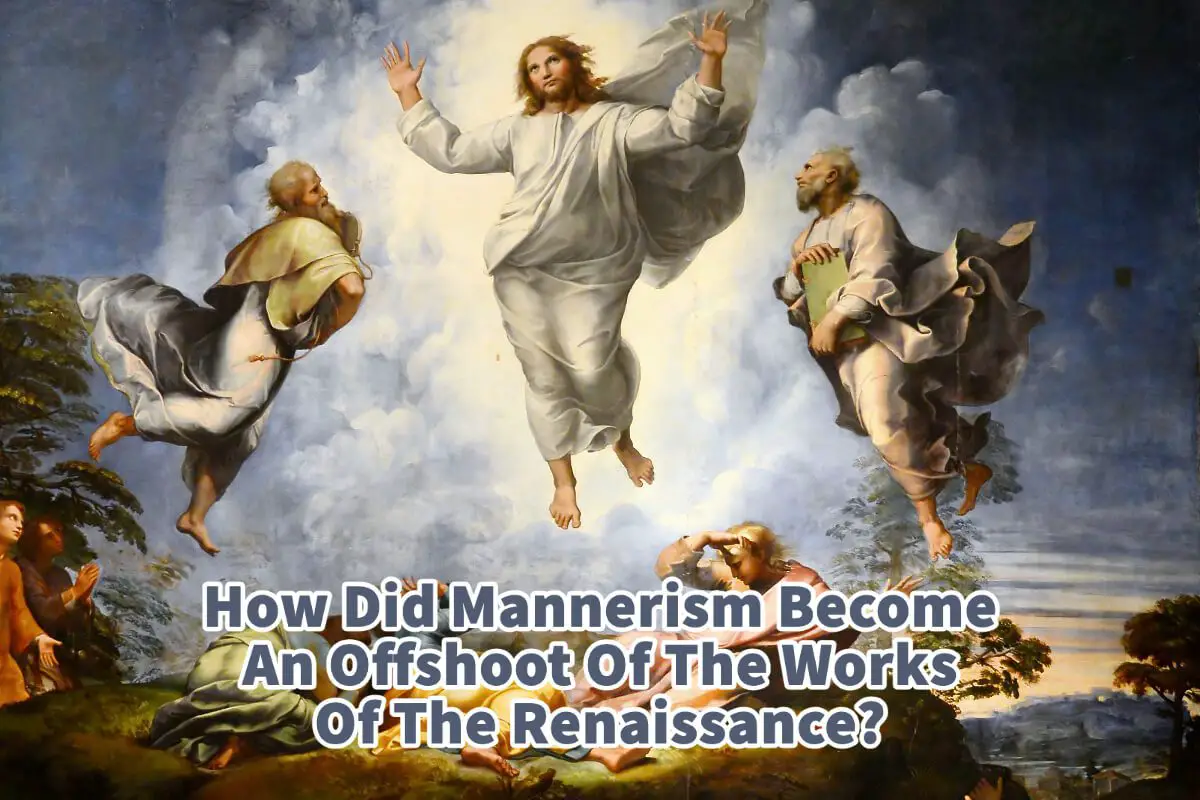Mannerism art is the short art movement sandwiched between the Renaissance and Baroque; it was a different art movement from the Renaissance.
Mannerism is the art movement that emerged after the High Renaissance era. Mannerism art is an offshoot of the Renaissance; Renaissance artist as Michelangelo and Raphael adopted mannerism techniques in their art. Mannerism art exaggerated and distorted elements of Renaissance art while creating a sense of imbalance in their art.
Table of Contents
- Mannerism Art And The Renaissance Art
- High Renaissance Offshoots Of Mannerism Art
- “Mannerism: The Graceful Artistic Rebellion of the Renaissance”
- Frequently Asked Questions
- Related Questions
Mannerism Art And The Renaissance Art
During the Renaissance era, the artist found their inspiration in the arts of Classical Greek and Rome. The Renaissance artists believed in the ideal form of art.
Mannerism is a style that emerged at the end of the Renaissance. The Mannerism artists took the principles they had learned from the Renassiase arts and added new twists to these artistic elements.
Mannerism is a style that started in Italy in about the 1520s and then found its way into the rest of Europe. Mannerism refers to the stylized yet exaggerated approach these artists applied to their paintings and sculptures.
Mannerism is known as the bridge between the High Renaissance era and the Baroque era, which also adopted many Mannerism art techniques.
As The Tate explains about the Mannerism art movement:
“Rather than adopting the harmonious ideals associated with Raphael and Michelangelo, they went a step further to create highly artificial compositions which showed off their techniques and skills in manipulating compositional elements to create a sense of sophisticated elegance.“
Tate
Unlike the Renaissance artists, where art was about proportions and form, the Mannerism artist exaggerated those forms, especially the human body. In their art, the body was in twisted forms, with elongated bodies and notoriously tiny heads.
The Mannerism artist was not concerned about ensuring the proportions of the bodies and the art were precisely correct. They built upon what the Renaissance artist had done but then exaggerated it and took it a few steps further in how they executed their art.
High Renaissance Offshoots Of Mannerism Art
Interestingly, Mannerism is that some of the styles can be seen in some High Renaissance art. This shows that before Mannerism was in full fledge, artists were starting to experiment with some of the Mannerism types of styles in their work.
Mannerism exaggerates and distorts the elements of Renaissance art to create a sense of imbalance. So Mannerism art is an offshoot of Renaissance art, but the artists built upon Renaissance art for their unique art form.
The Transfiguration By Raphael (1516 -1520)

Raphael is a High Renaissance artist. The Transfiguration is Raphael’s last painting before his untimely death in 1520.
Cardinal Giulio de Medici commissioned the Transfiguration to paint for the city of Narbonne in France. The painting is now housed at the Vatican Museums.
The painting is divided into two distinct parts; the Transfiguration is related to successive stories of the Gospel of Matthew. The upper part of the painting depicts Christ elevated in front of billowing clouds, surrounded by the prophets Elijah and Moses.
In the lower part of the painting, the Apostles are depicted unsuccessfully trying to rid a possessed boy of the demon. The upper part of the painting also shows the transfigured Christ performing miracles, curing the boy, and freeing him of evil.
What is interesting about this painting is that Raphael showed advanced indications and techniques for Mannerism in this painting in the bodies and how they are twisted and turned. We can see from this painting that even the Renaissance artist was influenced by Mannerism.
The Last Judgement – Sistine Chapel By Michelangelo (1536-1541)

Michelangelo is a painter that is associated with the High Renaissance era. But The Last Judgement paintings at the Sistine Chapel show a lot of Mannerism style and technique.
Michelangelo had a very long career as he lived to be 88 years old and spent his life producing art. Up until six days before his death in 1564, he worked on a sculpture.
Michelangelo painted the Sistine Chapel Ceiling from 1508 to 1512. When he returned to paint The Last Judgment from 1536 to 1542, the painting showed some Mannerism style. We can see that even Michelangelo, by 1536, was adopting Mannerism techniques in his art.
Artists like Michelangelo, known as Renaissance artists, were also part of the Mannerism movement.
Even though the Mannerism artists rejected a lot of the art and style of the Renaissance as far as their perspective and use of form, but the same time they were influenced by artists like Michelangelo and Raphael. The Mannerism artists used the techniques of Renaissance artists but added their perspectives on the art.
“Mannerism: The Graceful Artistic Rebellion of the Renaissance”
Mannerism stands out as a distinctive thread in the vast tapestry of art history. Emerging as a response to the harmonious ideals of the Renaissance, Mannerism blazed its own trail, challenging conventions and introducing a new, expressive language to the visual arts.
Dive into the intricacies of this movement as we explore ten enlightening facts about Mannerism:
- Historical Context: Mannerism blossomed in the later years of the Italian Renaissance, approximately between 1520 and 1600, serving as a transitional bridge between the High Renaissance and the ensuing Baroque period.
- Rebellion Against Harmony: In contrast to the Renaissance’s emphasis on balance and idealized beauty, Mannerism artists deliberately distorted space, scale, and proportions, opting for elongated figures and asymmetry.
- Elongated Figures: A signature trait of Mannerism is its serpentine, elongated human figures, exuding an aura of elegance and grace.
- Complex Compositions: Mannerist artworks are characterized by their intricate and sometimes confounding compositions, teeming with intertwined figures and dense scenes.
- Intense Emotion: These artworks often resonate with deep emotions, capturing everything from the ecstatic visions of saints to profound mythological moments.
- Vivid Color Palette: Straying from the balanced palettes of their predecessors, Mannerist artists favored bold, even jarring, color choices.
- Leading Artists: The movement saw the rise of artists like Jacopo Pontormo, Rosso Fiorentino, and Parmigianino, with even Michelangelo displaying Mannerist tendencies in later works such as “The Last Judgment.”
- Influence Beyond Italy: While its roots lie in Italy, Mannerism soon extended its reach to other parts of Europe, notably influencing the “School of Fontainebleau” in France.
- Architectural Impact: Mannerism’s influence wasn’t confined to painting and sculpture. Architects like Giulio Romano and Michelangelo introduced unconventional motifs and spatial solutions to the movement.
- A Precursor to the Baroque: Mannerism’s unique style set the stage for the drama and exuberance of the following Baroque period.
Charting a course away from established norms, Mannerism celebrates artistic freedom and innovation. It remains a vital chapter in art’s ongoing narrative, showcasing the ever-evolving nature of human expression.
Anita Louise Art is dedicated to art education, great artists, and inspiring others to find and create their art. We love art that uplifts and inspires. #ArtToMakeYouSmile! #ArtToMakeYouHappy!
If you are interested in seeing any of my art, you can find out more by clicking here. If you are interested in what inspires me and my paintings, you can discover more by clicking here.
We have a free newsletter and would love you to be part of our community; you can subscribe to the newsletter by clicking here. If you have any questions, I would be happy to talk to you at any time. You can reach me, Anita, by clicking here.
Subscribe to our Anita Louise Art YouTube Channel filled with great videos and information by clicking here.
Frequently Asked Questions
What is Mannerism in art?
Mannerism is an artistic style that emerged as an offshoot of the Renaissance during the late 16th century. Exaggerated forms, elongated figures, complex compositions, and a departure from the naturalistic ideals of the High Renaissance characterize it.
How did Mannerism develop as an offshoot of the Renaissance?
Mannerism developed as a reaction to the harmonious and balanced compositions of the High Renaissance. Artists began experimenting with unconventional forms, exaggerated poses, and complex compositions, challenging the Renaissance ideals of naturalism and proportion.
What were the key factors that led to the emergence of Mannerism?
Several factors contributed to the emergence of Mannerism, including the changing cultural and social climate, the desire of artists to break away from established norms, the influence of individual artistic expression, and a fascination with complexity and intellectualism.
How did Mannerism differ from the Renaissance art style?
Mannerism differed from the Renaissance art style in its departure from naturalistic ideals. While the Renaissance aimed for balance, harmony, and idealized beauty, Mannerism embraced distortion, complexity, and exaggerated forms.
Did Mannerism maintain any elements of the Renaissance?
While Mannerism departed from some Renaissance ideals, it still maintained certain elements inherited from the Renaissance. These included a deep understanding of classical art, anatomy knowledge, and humanist thought’s influence.
Who were the prominent artists associated with Mannerism?
Artists such as Parmigianino, Jacopo da Pontormo, Rosso Fiorentino, and Tintoretto are considered prominent Mannerist artists. Their works showcase the distinctive features and characteristics of the Mannerist style.
How did Mannerism challenge the artistic conventions of the Renaissance?
Mannerism challenged artistic conventions by deliberately distorting proportions, using exaggerated poses, and creating complex and intricate compositions. It rejected the Renaissance ideals of harmony and naturalism, favoring a more expressive and intellectual approach.
Did Mannerism influence other art forms besides painting?
Yes, Mannerism influenced other art forms, including sculpture, architecture, and decorative arts. The Mannerist style can be observed in the elongated and exaggerated forms of sculptures and the complex architectural designs of the time.
Related Questions
What Are The Characteristics Of Mannerism Art?
Mannerism was an art movement filled with elongated bodies, tiny heads, and human figures in twisted forms. Perspective and proportion were unnecessary, but colors, contrasts, virtuosity, and agitated compositions are essential.
By clicking here, you can learn more by reading What Are The Characteristics Of Mannerism Art?
What Was The Focus Of Renaissance Art?
The focus of Renaissance art was on the classics of Greek and Rome, humanist philosophy, and the study of the human figure. Realism was also an essential part of renaissance art. The great artists of the Renaissance also became great anatomists and studied human beings.
By clicking here, you can learn more by reading What Was The Focus Of Renaissance Art?.
What Are The Major Periods In Western Art History?
The significant Western art history periods are defined as Prehistoric Art, Ancient Art, Medieval Art, the Renaissance, Mannerism, Baroque, Rococo, Neoclassicism, Romanticism, Realism, Art Nouveau, Impressionism, Post – Impressionism, Fauvism, Expressionism, Cubism, Surrealism, Abstract Expressionism, Op Art, Pop Art, Arte Povera, Minimalism, Conceptual Art and Contemporary Art.
By clicking here, you can learn more by reading What Are The Major Periods In Western Art History?.


